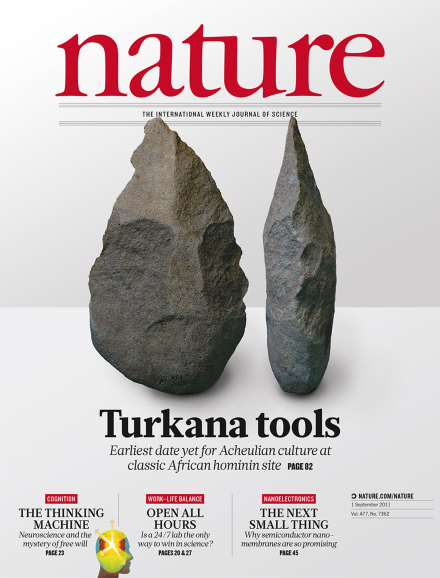Volume 477 Issue 7362, 1 September 2011
Postdoc Journal
Editorial
World View
Research Highlights
Seven Days
News
News Feature
Comment
Books & Arts
Correspondence
Obituary
News & Views
Review Article
Article
Letter
-
An earlier origin for the Acheulian
Collection:

